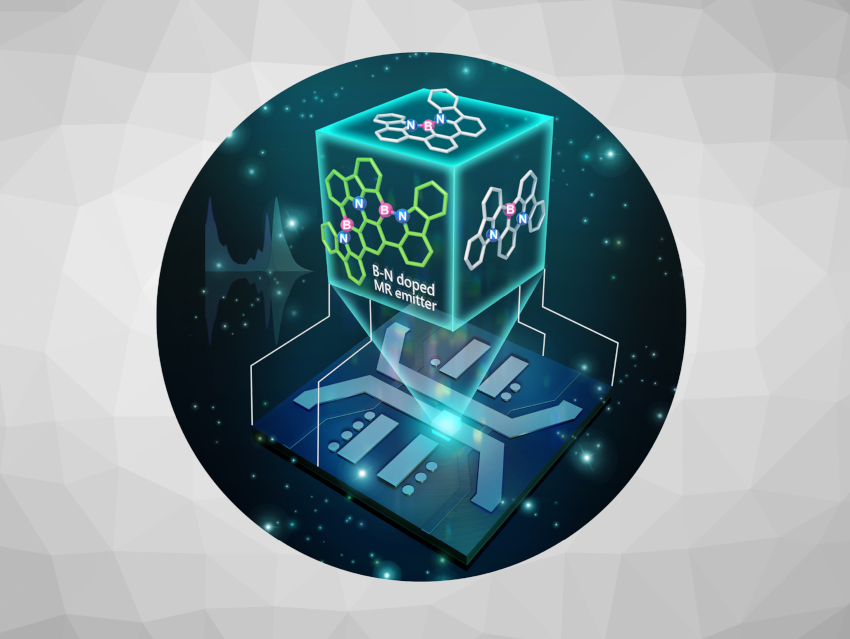In this issue, G. Gasser et al. review stimuli-responsive metal complexes for biomedical applications, B. L. Feringa et al. summarize work on chemically driven rotary molecular machines, and X.-D. Wang et al. rationalize the design and growth of branched organic crystals. The Minireview deals with bio-inspired self-assembled nanochannels for smart ion transport (L. Wen et al.). G. Berionni discusses regioselective transition-metal-free arene C–H borylations in a Highlight. In a Viewpoint Article, A. Anastasaki points out what matters to obtain a European Research Council (ERC) starting grant.
In the original research section, L. Duan et al. describe the amine-directed formation of B–N bonds for BN-fused polycyclic aromatic multiple resonance emitters with narrowband emission (see picture). M. Robert et al. succeeded in the molecular electrochemical reductive splitting of dinitrogen with a molybdenum complex. W. Zi et al. report an enantioselective three-component photochemical 1,4-bisalkylation of 1,3-butadiene with Pd/Cu catalysis. M. P. Conley et al. observed the formation of a strong heterogeneous aluminium Lewis acid on silica.
- Angewandte Chemie 40/2022: Responding to Stimuli,
Angew. Chem. Int. Ed. 2022, 61 (40).


